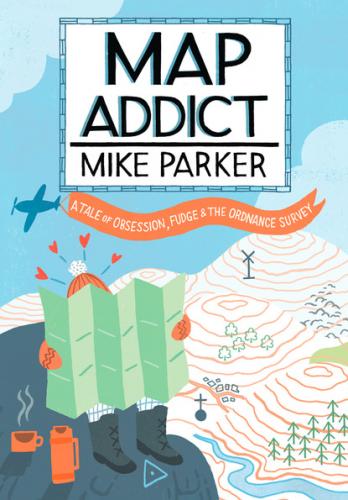MAP
ADDICT
MIKE PARKER
A TALE OF OBSESSION, FUDGE & THE ORDNANCE SURVEY
First published in 2009 by Collins, an imprint of Harper Collins Publishers 1 London Bridge Street, London SE1 9GF
Collins is a registered trademark of Harper Collins Publishers Ltd
10 9 8 7 6 5 4 3 2 1
Text © Mike Parker 2009
The author asserts his moral right to be identified as the author of this work
A catalogue record for this book is available from the British Library
All rights reserved under International and Pan-American Copyright Conventions. By payment of the required fees, you have been granted the non-exclusive, non-transferable right to access and read the text of this e-book on-screen. No part of this text may be reproduced, transmitted, down-loaded, decompiled, reverse engineered, or stored in or introduced into any information storage and retrieval system, in any form or by any means, whether electronic or mechanical, now known or hereinafter invented, without the express written permission of HarperCollins e-books.
Source ISBN: 9780007300846
Ebook Edition © AUGUST 2009 ISBN: 9780007345175
Version: 2019-09-03
To Rachel.
At last.
Table of Contents
Recently, some new neighbours moved in. They’d trekked halfway across the country, from the fringes of Manchester to their new life in our small village in the mountains of mid Wales. One night, I was showing them a good local walk, using my well-worn Ordnance Survey Explorer Map (OL23 Cadair Idris & Llyn Tegid, for aficionados). ‘Oh, yes,’ one of them mused. ‘That reminds me, I must get a map of the area.’
I swear the world stood still. What I wanted to say was, ‘You mean, you moved here from over a hundred miles away without buying a map first? Without taking it out on a nightly basis, stroking its contours, gently murmuring the unfamiliar names, idly following with your finger footpaths and streams, back lanes and bridleways, feeling faintly, randomly intimidated by the angular blocks of plantation forestry and sumps of squelchy moorland, excited by the wide beaches, towering peaks, limpid lakes and nestled market towns, all spread beguilingly across the paper? Without enjoying the thrill of anticipation of your impending move to a whole new world? Without checking out that whole new world, as captured by the gods of the Ordnance Survey? Are you mad? What in bejesus’ name is the matter with you?’
What I actually said was, ‘Oh, right. They sell them in the bookshop in town.’
If my cowardly internalised rant had you mentally nodding in agreement; if you like to check the map before a trip to B&Q; if you can sit and read a good map like others read Hello! or Heat, then this book is for you. You are a fellow-mappie, we are of one flesh. If, on the other hand, it’s got you thinking, ‘What a ridiculous over-reaction: what’s his problem, then?’ I’d advise you to put the book down now and walk away from it before it begins seriously to annoy you.
Many children have imaginary friends to help offset a lonely world. I had imaginary towns instead, and they were all intricately mapped. Hours would dribble by as I sat, tongue slightly protruding, drawing detailed plans of these fictional fiefdoms, giggling quietly to myself as I named the streets, threw in a ring road or bypass—this was the 1970s, after all—and methodically placing schools, stations and hospitals into the growing grid.
Any careers psychologist, observing this habit (especially the relish with which I’d drive a new dual carriageway through anything), would have predicted with utmost confidence that I was destined to become a town planner. But it wasn’t the towns or the buildings or the streets themselves that interested me—just the maps. It didn’t matter that they were imaginary; any map, any reduction of a complex landscape into two clean, clear dimensions, somehow thrilled and comforted me. More than thirty years on, it still does.
While some people, to shut out the insistent
